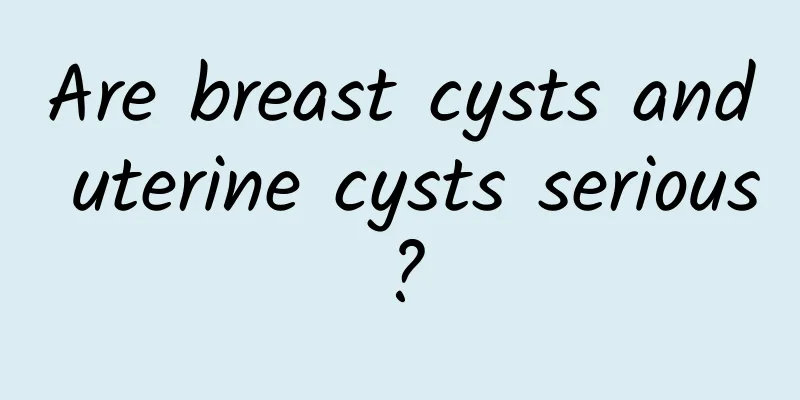Difference between cervical adhesion and intrauterine adhesion

|
The main difference between cervical adhesions and intrauterine adhesions is the location and symptoms, and the treatment methods are also different. Cervical adhesions occur in the cervix and are often manifested as abnormal menstruation or infertility; intrauterine adhesions occur in the uterine cavity, and common symptoms include decreased menstruation or amenorrhea. Both require drug treatment, surgical treatment or other auxiliary treatments based on the severity. 1. The causes of cervical adhesion and intrauterine adhesion are different. Cervical adhesion is mostly caused by cervical surgery, infection or inflammation. Repeated stimulation of inflammation leads to fibrosis of cervical tissue and the formation of adhesion. Intrauterine adhesion is common after intrauterine surgery, such as artificial abortion, curettage, etc. The damaged endometrium heals poorly, forming fibrous tissue adhesion. Intrauterine infection or endometriosis may also cause adhesion. 2. Symptoms vary. Cervical adhesions may cause increased or decreased menstrual flow, and some patients may experience dysmenorrhea or infertility. Symptoms of intrauterine adhesions are mainly a significant decrease in menstrual flow or amenorrhea, which may affect normal pregnancy in severe cases. Some patients may also experience periodic lower abdominal pain. 3. The diagnosis methods are slightly different. Cervical adhesions can be diagnosed through gynecological examination, ultrasound or hysteroscopy, and the doctor can directly observe the adhesions in the cervix. The diagnosis of intrauterine adhesions mainly relies on hysteroscopy or hysterosalpingography, which can directly show the scope and degree of intrauterine adhesions. 4. Treatment methods are selected according to the severity of the disease. Mild cervical adhesions can be treated with drugs, such as local use of estrogen ointment or antibiotic ointment to promote tissue repair. Moderate to severe patients require cervical dilation or hysteroscopic separation. The treatment of intrauterine adhesions is mainly hysteroscopic surgery, and estrogen therapy is required after surgery to promote endometrial regeneration. Some patients may also need to place an intrauterine device or balloon stent to prevent adhesions again. 5. The focus of preventive measures is different. To prevent cervical adhesions, you should avoid frequent cervical surgeries, treat cervical inflammation in a timely manner, and maintain personal hygiene. To prevent intrauterine adhesions, you need to reduce intrauterine surgery, especially after artificial abortion or curettage, and use antibiotics and estrogen as prescribed by the doctor to promote endometrial repair. Although both cervical adhesions and intrauterine adhesions involve the female reproductive system, their causes, symptoms and treatment methods are different. Regardless of the type of adhesion, timely diagnosis and treatment are key to avoid affecting reproductive function. Patients should choose a suitable treatment plan based on the doctor's advice, and pay attention to postoperative care and preventive measures to reduce the risk of recurrence. |
<<: What are the symptoms of inflammation after abortion?
>>: Is there a relationship between dysmenorrhea and uterine malformation?
Recommend
To prevent vulvar leukoplakia, pay attention to the hygiene of the vulva
Experts say that wearing loose, breathable underw...
Eating at home has increased after the epidemic! More than 70% of Taiwanese people eat seafood at least once a week, ranking third in Asia
After the epidemic, people whose lives are gradua...
Patients should clearly understand the cause of adnexitis
Adnexitis is a comprehensive gynecological diseas...
Effective prevention of hyperprolactinemia
What are the effective prevention methods for hyp...
What are the symptoms of abnormal leucorrhea
Gynecological diseases are very common among wome...
Ride out hope! Cycling to keep blood sugar level below 7
It is very important for diabetics to control blo...
Patients should be aware of the specific symptoms of irregular menstruation in a timely manner
Irregular menstruation often occurs in women'...
What are the common symptoms of ovarian cysts?
What are the symptoms of right ovarian cysts? Do ...
How does menopause affect the body?
Menopause is an inevitable experience for every w...
Comparison of various surgical procedures for the treatment of multiple uterine fibroids
Surgery is a common method for treating multiple ...
What are the common symptoms of ectopic pregnancy?
What are the common symptoms of ectopic pregnancy...
Is it normal to have fluid in the uterus before menstruation?
Whether it is normal to have uterine fluid accumu...
How to correctly diagnose pelvic peritonitis
Among gynecological diseases, pelvic inflammatory...
What should you pay attention to after painless abortion
There are many things that should be paid attenti...
How to prevent spontaneous abortion?
How to prevent spontaneous abortion? The occurren...









